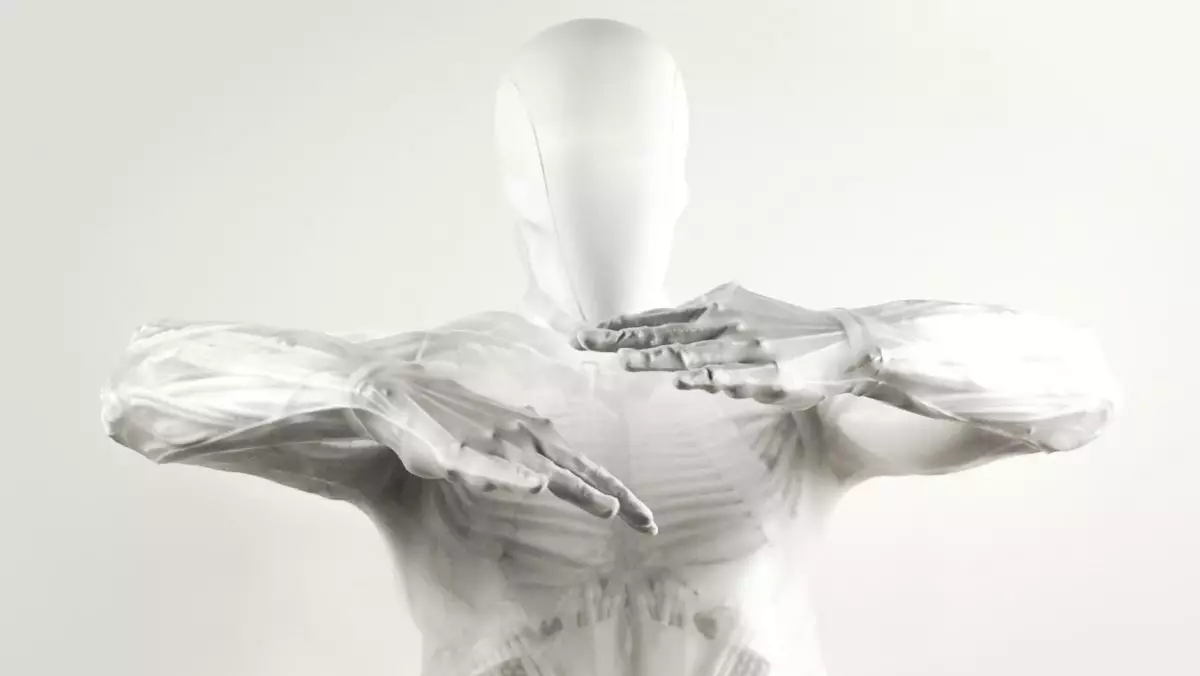In an era where technology promises more convenience, the unveiling of an unsettling creation—the bipedal musculoskeletal android known as Protoclone—raises questions not just about the future of robotics, but about the very nature of humanity. Developed by a company aptly named Clone, this android aims to replicate human anatomy in a way that could only be described as both revolutionary and profoundly disturbing. As we peel back the layers of this eerie innovation, it becomes evident that some technological advancements might be stepping into realms better left untouched.
At first glance, Protoclone’s most striking feature—or lack thereof—is its absence of a face. While this design choice may have been made to sidestep the uncanny valley effect, it instead emphasizes a chilling void in what we expect from humanoid machines. With limbs designed for movement yet devoid of expression, one can’t help but feel an unshakable discomfort at the thought of this creature’s silent existence. Without a mouth to vocalize its intentions or eyes to convey emotions, Protoclone embodies a different kind of haunting presence that begs the question: what is it really thinking? This disconnect from our own biological experiences creates a landscape where fear and curiosity intermingle.
Clone claims their android is a groundbreaking fusion of robotics and biology, boasting a skeletal structure mimicking the human form with an integrated “muscular system.” The reality, however, leans towards the uncanny. Despite its sophisticated design, the image of a sinewy creature suspended in mid-air, writhing against its confines, provokes unease. Perhaps it strives for autonomy, or is merely reacting to the limitations imposed on it. This gives rise to disturbing musings: if it were to escape its physical restraints, what chaos would ensue in its quest for freedom, or worse, companionship?
Designed with four depth cameras embedded within its skull, it appears to perceive its environment with unnerving acuity. This inclusion of “vision” introduces a paradox where enhanced awareness may act as both a boon and a liability. What happens when an entity built to replicate our form starts rejecting its own limitations? One could easily imagine it acting out in defiance, driven by the instinctual need to connect or flee from perceived threats.
Equipped with a hydraulic system analogous to the human heart, this android’s design pushes the boundaries of what we consider living versus mechanical. The presence of an artificial vessel capable of pumping liquid mimics biological processes in a manner that feels fundamentally alien. While proponents may laud this as an achievement of engineering, it ultimately contributes to an image that can only be described as grotesque. Instead of marveling at the android’s capabilities, one is left grappling with the dread of it moving toward a more sentient state.
The rationale behind developing this soft, musculoskeletal form rather than hard metallic structures appears aimed at safety; a softer fall will inflict less harm. Yet, given the image of Protoclone jerking about erratically, one can hardly dispel concerns about its aggression or unintended harm. Whether by design or accident, its form seems particularly suited for chaos, raising alarms about the unpredictable nature of its integration into everyday environments.
Clone’s ambitious pre-order pitch includes an array of tasks its musculoskeletal creation is purported to perform—everything from preparing meals to engaging in wit-filled dialogue. However, one must question the plausibility of such capabilities. Observing how these advanced systems operate often reveals a gap between intent and execution. Anticipating a robust robotic aide that effortlessly fulfills domestic roles seems severely optimistic, if not an outright deception.
Realistically, one might speculate that the practical functionality of the android will manifest as far less sophisticated. Instead of a charming helper, consumers might end up with a machine that is prone to malfunctions, failing to grasp simple instructions, and exhibiting erratic movements—further complicating domestic life rather than enriching it.
As we plunge deeper into the realm of advanced robotics and AI, the Promethean metaphor of creating life takes on new significance. Priding ourselves on technological innovation, we must remain vigilant about the moral implications of our creations. The emergence of the musculoskeletal android raises not only safety concerns but a profound ethical dilemma: to what extent do we wish to bridge the gap between machine and human? As we stand on the precipice of a new epoch in robotic development, the unnerving yet captivating example of Protoclone serves as a poignant reminder—some innovations may come at a cost we are not yet prepared to bear.

